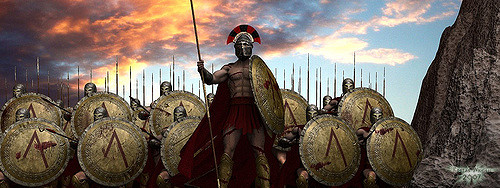Leadership is one of the personality traits that people value most today. Being a leader, or becoming one, seems to be the desire of many; however, it is not an easy achievement to reach. Being a successful leader is mostly the result of a long road of self-improvement that not so many are willing to take.
Analyzing the concept of leadership can be done from different perspectives. Nevertheless, the best way to tell if someone is a good or a bad leader is to observe how that person has built himself/herself from within. Building a leader from within means focusing on habits, personality traits, abilities and skills that make him who he/she is. And then we find the eternal question: Does the leader born a natural leader, or has become a leader? Maybe both. All people are born with certain attributes, qualities and skills that may become skills that allow them to affect their environments in different ways: some in a bigger proportion, some less. The truth is that there are people who affect others tremendously, whose decisions become an influence and drive others to follow them. We call them leaders. Not all of them are good, nor bad. How to tell the difference then?
Bad leaders
- Lack of vision. It’s common in those who can’t inspire their teams, motivate performance or create sustainable value. A leader aligns the organization around a clear and achievable vision, and it simply doesn’t happen if the blind leads the blind and all of them fall into the pit.
- Lack of character: A leader who doesn’t show enough character or integrity will not stand long for sure. No matter how smart, affable, persuasive and cunning they are, they won’t be in charge. It’s important to know the concept of assertiveness, which is very different than violence: another extreme that good leaders avoid.
- Little leadership: Nobody is perfect, but leaders who usually fail are not leaders. Someone who has always been successful in leadership roles is much more likely to succeed than a person who doesn’t. Leaders take risks and know how and when to take them. Not just that: they encourage their followers to support them in those decisions, and that feedback help them more.
- Refusing to learn from others: They do not need to be the smartest person, but have the constant desire to learn from others. Leaders who are not growing can’t lead a growing company. One of the characteristics of great leaders is their insatiable curiosity. If a leader is not very curious about all aspects of your organization, there are problems on the horizon. Leaders also triggers curiosity in their followers and make them feel they have challenges and goals to achieve. When employees don’t find much intellectual challenge in their companies (which is an incentive provided by true leaders), they usually quit, for example.
- No responsibility. When objectives are not fulfilled, for any reason, bad leaders always find an excuse and believe that the responsibility of all problems lays in others, never in themselves. Jason Hanold considers that “bad leaders don’t evaluate themselves in order to improve, they give their success for granted.”
- Empty Promises: Bad leaders motivate their followers with false promises of promotions, success and wonderful futures… and it never truly happens. Leaders who do this are manipulative and only think in their convenience.
Good leaders

Image courtesy of Ngo Quang Minh at Flickr.com
- Desire for change: Leaders really want to get up every day with a different points of view of their surroundings, and they believe in the possibility of affecting it positively. That is their great incentive (and perhaps their secret).
- Commitment: It’s not only a requirement to undertake great tasks that will require a lot of time and energy, is also a result. People influenced by leaders also feel committed to their goals and believe in what they are doing.
- Initiative: An essential quality. People usually get used to the problems of the everyday landscape. A leader has capacity for astonishment: they ask themselves about the causes of such problems and take actions to solve them.
- Dealing with fear: People usually think that leaders are not afraid before making decisions, when they are executing those choices and after they are taken. By contrast, leaders are people like any of us; the only difference is that despite feeling fear, they react positively.
- Understanding the environment: It’s completely impossible to lead a company, a nation, a team or community if the environment in which the group operates is not known. A leader needs to know the people of the group he/she commands and the conditions of the environment where that group operates.
- Self-knowledge: A true leader knows himself/herself, recognizes his/her limitations, his/her abilities and strengths, and strives to be better every day. A true leader understands how his/her emotions affect his/her performance. In addition, he/she is an honest person who is able to make a realistic evaluation, to admit mistakes, to correct them and to learn from them for future opportunities.

